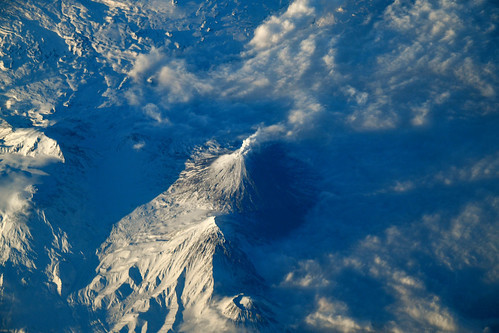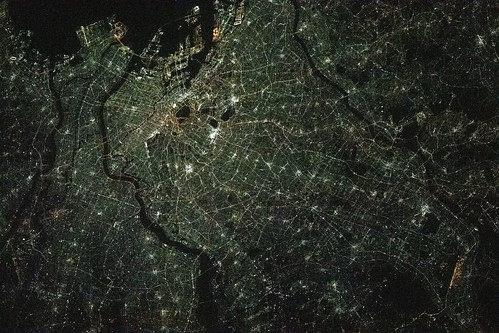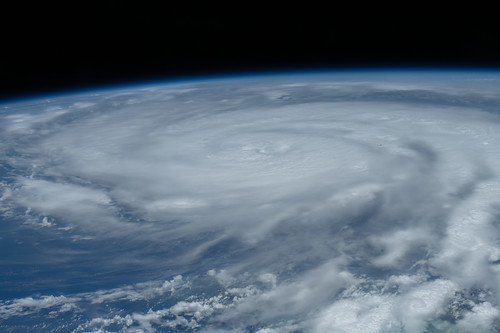Matador Network's Blog, page 596
September 3, 2021
1 in 3 Americans deterred by restaurant mask mandates. Here’s where it’s already required.

As the Delta variant sweeps across the US, many cities and states are questioning their previous decision to relax COVID-19 restrictions. And with a vaccine rate of just over 50 percent when you include children under 12 who are ineligible, the country still has a ways to go before reaching herd immunity.
A new study shows that Americans have different opinions on whether mask and vaccine mandates for restaurants will lead to them not going to a restaurant. A National Restaurant Association survey found that one out of three Americans would be deterred from eating at a restaurant if they had to prove they’d been vaccinated. Just over 30 percent stated they would be deterred if they had to wear a mask. However, 33 percent said a vaccine mandate would make them more inclined to dine in a restaurant, and 25 percent of respondents said a mask mandate would encourage them to eat indoors.
The thing is, in some cities and states, restaurant mask and vaccine mandates are already in place, and it’s important to know where if you have any plans about eating out on a visit. New York City has its Key to NYC vaccine pass program, where patrons must have at least one dose of a COVID-19 vaccine to access some indoor spaces, including restaurants.
Other cities and counties that require masks indoors regardless of full or partial vaccination at the time of publication:
New OrleansWashington DCLos AngelesSan FranciscoBerkeley, CaliforniaSacramento, CaliforniaNew Haven, ConnecticutHartford, ConnecticutPhiladelphiaAtlantaBaltimoreSt. Louis, MissouriLincoln, NebraskaCary, North CarolinaCharlotte, North CarolinaRaleigh, North CarolinaLancaster County, NebraskaEvery Nevada county except Mineral CountyPrince George County, MarylandShelby County, TennesseeDurham County, North CarolinaOrange County, North CarolinaSanta Clara County, CaliforniaAlameda County, CaliforniaContra Costa County, CaliforniaMarin County, CaliforniaSan Mateo County, CaliforniaSonoma County, CaliforniaYolo County, CaliforniaAlthough many states are sticking to CDC guidelines that unvaccinated individuals should be masked up, some are requiring, some are encouraging, and some are banning mask use altogether. States and territories with indoor mask mandates regardless of vaccination status:
HawaiiIllinoisLouisianaNew MexicoWashingtonPuerto RicoRegardless of where you go, be sure to check local government sites for the most up-to-date information on mask mandates.
The post 1 in 3 Americans deterred by restaurant mask mandates. Here’s where it’s already required. appeared first on Matador Network.
This Milwaukee hotel is an artist’s dream right on the RiverWalk
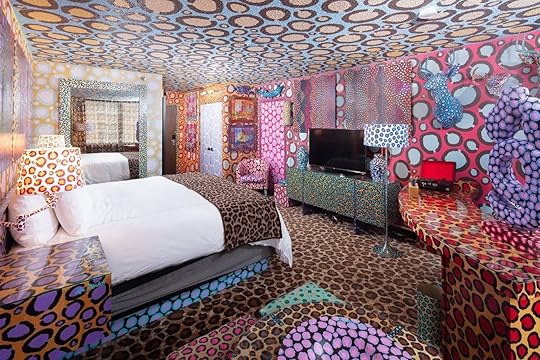
We hope you love the spaces and stays we recommend! Just so you know, Matador may collect a small commission from the links on this page if you decide to book a stay. Listed prices are accurate as of the time of publication. See our full Advertiser Disclosure here.
Milwaukee is home to America’s most underappreciated RiverWalk. The Milwaukee River is a prime recreation destination in the city — its banks are lined with cafes, hotels, restaurants. Simply put, if you’re visiting Milwaukee for beer tastings, nights out, and other cultural highlights of Wisconsin’s biggest city, you want to stay as close to the RiverWalk as possible. Fortunately, some of the best hotels in Milwaukee are nearby.
Case in point, stay on the river walk at Saint Kate – The Arts Hotel. This iconic property puts you in the heart of the action, with trendy dining and drinking to be had on-site. This hotel is a great choice for those looking to dive into downtown Milwaukee’s social scene. In addition to its four restaurants and two bars, the Saint Kate hosts rotating art exhibits in the lobby.
Best yet, the Saint Kate is offering great rates this fall and winter, with rooms as low as $210 — a steal for one of the best hotels in Milwaukee.
Some of the rooms are standard, well-trimmed hotel experiences, with a touch of art.
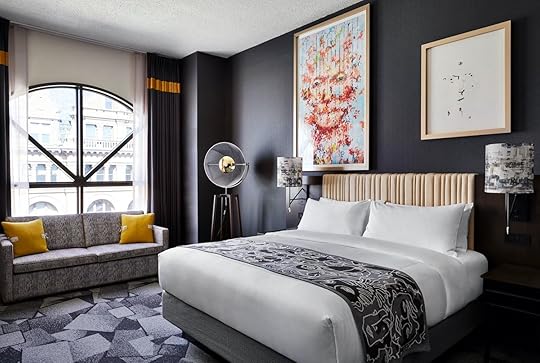
Photo: Saint Kate – The Arts Hotel/Facebook
Others, however, are wonderfully over-the-top

Photo: Saint Kate – The Arts Hotel/Facebook
Within walking distance of the hotel are the Milwaukee Art Museum, the Fiserv Forum, and the heart of East Town — where you’ll find breweries, museums, and easy access to the shoreline of Milwaukee Bay. You can also get to Cathedral Square Park on foot in just five minutes. The hotel is noted as an easy win for couples, so if you’re traveling with your partner, surprise them by having the front desk make a dinner reservation at the nearby Sanford restaurant.
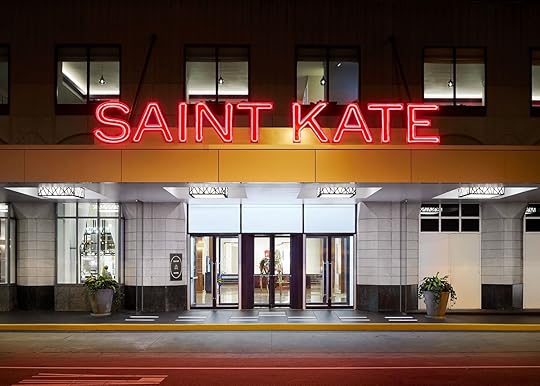
Photo: Saint Kate – The Arts Hotel/Facebook
Inside the room, enjoy 24-hour room service as you take in panoramic views of the city skyline. You’ll be comfortable, elevated, and well-rested to explore Brew City without need for a rental car. 
Price: From $210
More like thisRestaurants + Bars11 breweries that prove Milwaukee is a can’t-miss Midwest beer cityThe post This Milwaukee hotel is an artist’s dream right on the RiverWalk appeared first on Matador Network.
10 of the most luxurious stargazing resorts around the world
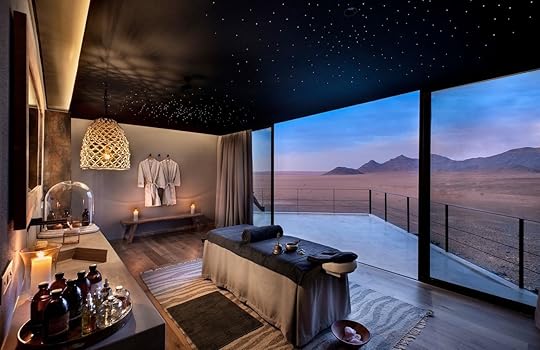
Connecting with nature doesn’t have to mean long hikes to the mountains, kayaking over rapids, or finding your way through thick jungles. It can also mean relaxing in one of the best stargazing places, under a dark sky.
While many luxury resorts around the world are committed to sustainability by meticulous recycling and using ecological products, many are also paying attention to another type of natural resource humans are losing: the ability to admire dark skies and the twinkling stars.
In fact, because of all the artificial light we rely on, the majority of people living in the US and Europe can’t see the Milky Way at night. This is why the best stargazing places are located far away from light pollution.
Here’s where you can gaze at the starry night sky in an ultra-luxe setting — from your private plunge pool in a desert or an oceanside villa backed with a tropical jungle.
We hope you love the resorts we recommend! Just so you know, Matador may collect a small commission from the links on this page if you decide to book a stay. Listed prices are accurate as of the time of publication. See our full Advertiser Disclosure here.
1. Camping under the stars in Utah, Camp Sarika by Amangiri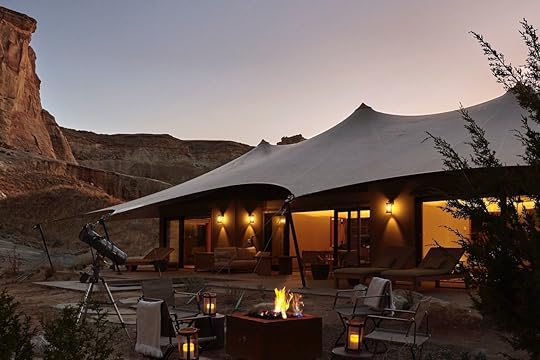
Photo: Aman Resorts/Facebook
Surrounded by the Southern Utah desert’s dramatic rock formations, Amangiri offers a lavish stay for the fans of stargazing — whether it is the astral or the Hollywood kind. The resort’s architecture and minimalist decor highlight the beauty of the ancient landscape by using natural materials such as Douglas fir timber, blackened steel, white stone, and polished glass.
But as perfect as Amangiri is for luxurious stargazing, you can plunge even deeper into the desert ambient and stay in Amangiri’s new addition, Camp Sarika. Set in an otherworldly landscape of canyons and rust-coloured sands, Camp Sarika’s tented retreat is a cluster of 10 canvas-topped pavilions, with plunge pools and fire-pits on the private terraces.
Away from the modern world, Camp Sarika’s seclusion deepens the sense of connection with nature night and day, as the 180-million-year-old desert is also one of the best places on earth to see the Milky Way. You can also request a telescope for your use.
Average price for two per night: $2,290
2. Heavenly beach hotel in Hawaii, Mauna Kea Beach Hotel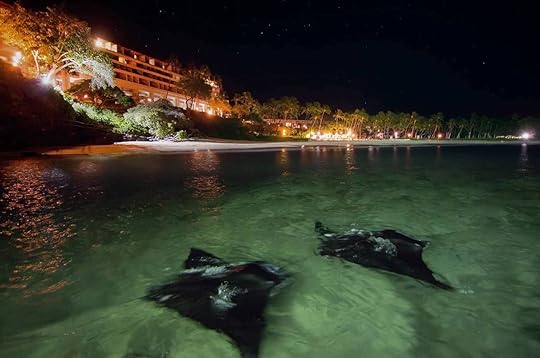
Photo: Maunakea Beach Hotel
The Island of Hawai’i provides some of the world’s most astonishing stargazing opportunities so it is no wonder that the dormant volcano Mauna Kea houses the largest research observatory in the world. The summit, 13,803 feet above sea level, provides a clear view of the constellations, but you don’t need to hike all the way up, as the Milky Way and its accompanying astral wonders are visible from pretty much anywhere on the island.
One of the most spectacular stargazing spots on The Big Island is the Mauna Kea Beach Hotel. Located on the Kohala Coast, this oceanfront resort combines sunny beaches, lush vegetation, and nighttime stargazing. The hotel can book tours to help you learn about Polynesian celestial navigation that guided canoe voyagers to Hawaii and to master the constellations as a guide outlines them with powerful lasers. You can also gaze at deep space objects such as galaxies, nebulae, and multiple star systems with Celestron 11 Telescopes.
Average price for two per night: $400
3. Ranch vibes and dark skies in Texas, La Cantera Resort and Spa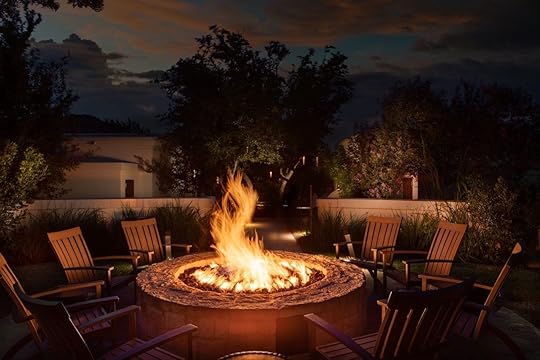
Photo: La Cantera Resort Spa/Facebook
Located just outside the Hill Country State Natural Area, La Cantera Resort and Spa is not only a perfect base to explore the over 5,000 acres of rugged canyons at this former ranch northwest of San Antonio but also to spend quiet nights gazing at the stars.
Inspired by the history of Texas Hill Country, the resort’s Villas pay homage to the region’s iconic ranches. Spanish colonial revival architecture and outdoor water and fire features highlight the rustic hillside landscape and the unique San Antonio character. The Villas are located a short walk away from the main resort, offering a serene boutique hideaway.
One of the best spots to enjoy San Antonio’s night sky is the Resort’s adults-only infinity pool lined with cabañas and a poolside bar. Or, if you want to have all the stars just for yourself, stay at one of the Villas providing private fire pits to enhance the feel of luxurious camping under the vast Texas sky.
Average price for two per night: $215
4. Safari and stars in South Africa, Molori Safari Lodge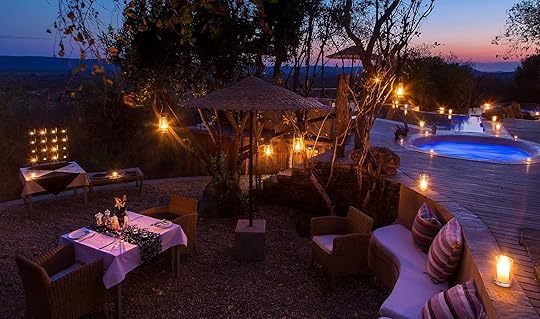
Photo: Molori Safari/Facebook
Originally built as the owners’ private family retreat, the five-suite Molori Safari Lodge is located in South Africa’s Madikwe Game Reserve and overlooks the Dwarsberg Mountains and the Madikwe Valley. This lesser-known game reserve, home to all of Africa’s Big Five, is close to the Botswana border, and about four hours drive away from Johannesburg.
The main lodge has viewing decks to take in the beautiful surroundings. There are also four dining areas, a library, a large living room and a bar as well as a stargazing platform complete with a top-of-the-range telescope. The reserve has five luxurious, open-air suites. All of the suites have floor-to-ceiling retractable glass walls, opening up to a private deck and infinity pool — a perfect setting to be amazed by the astral miracles in Africa.
Average price for two for two nights: $1,115
5. Astral explorations in Chile’s Atacama, Tierra Atacama Hotel and Spa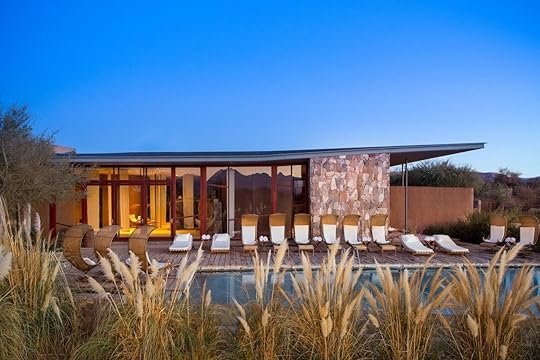
Photo: Tierra Hotels
Far away from the light pollution of cities, Tierra Atacama Hotel and Spa is set high in the northern reaches of the Atacama desert, the driest non polar desert in the world. Here, the altitude added to the bone-dry atmosphere makes the skies clear, and the Atacama Desert a stargazer’s paradise.
The hotel’s 32 rooms all have a view of the nearby volcano rising up to 20 000 feet, and the hotel’s interior makes use of traditional materials from dry adobe bricks, wood and bamboo to local textiles and llama rugs. The premises stretch over five hectares of land just outside San Pedro de Atacama, and there is plenty to do nearby whether you prefer lounging by the pool, relaxing in the spa, or hiking in the desert landscape dotted with terracotta mountains.
You can also book a private excursion to an observatory near San Pedro with the renowned French astronomer Alain Maury. With a handful of large telescopes as his assistants, Maury will initiate you with the marvels of the Milky Way and guide your way to the magic of the stars.
Average price for two per night: $550
6. Dark Sky Reserve in Namibia, andBeyond Sossusvlei Desert Lodge
Photo: Sossusvlei Desert Lodge/Facebook
The NamibRand Nature Reserve is one of Africaʼs largest private nature reserves, and it is set in one of the darkest, yet accessible, places on Earth. Here, bordering one of the world’s 18 Dark Sky Reserves, andBeyond Sossusvlei Desert Lodge gives an unparalleled view of the famous Namibian night sky.
The guests can enjoy the serenity of the desert while staying in one of the lodge’s 10 villas, cradled against ancient mountains. Each villa has its own private veranda, living room with a fireplace, and a split-level bedroom with a skylight to enjoy the vast expanses of the Namibian sky. You can also experience exceptional star gazing from the fully equipped observatory at the lodge.
Average price for two per night: $622
7. Arctic skies in Sweden, The 7th Room Treehotel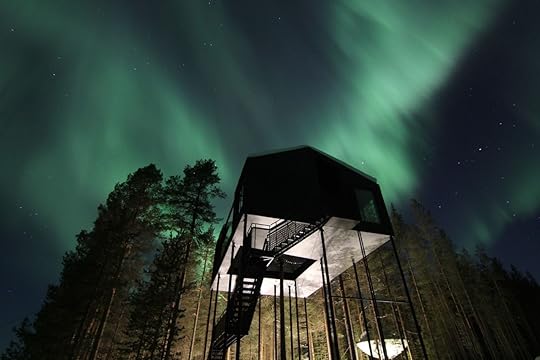
Photo: TreeHotel/Facebook
Hovering ten meters above the ground within a tree canopy, the Snøhetta-designed 7th room is an ultra-stylish take on a treehouse. The 7th room is located outside the reach of modern-day light pollution, just over 60 miles from the arctic circle. From the treetops, you will have a breathtaking view of the Lappish landscape, Lule River, and the Scandinavian night sky.
This sleek cottage’s wooden façade is clad with pine boards, the indoor flooring is made from ash wood and birch plywood is used for the interior walls. A staircase brings guests up into the cottage, but luggage has its own small lift.
The heart of the cottage is the Northern Light lounge. The area is decorated, for example, with the Norwegian furniture designer Hans Brattrud’s products. But the highlight opens up behind the wall-sized windows as the Scandinavian night sky starts its show with glittering stars and if you are in luck, the northern lights.
Average price for two per night: $808
8. Wine tasting and star spotting in Portugal, L’AND Vineyards Resort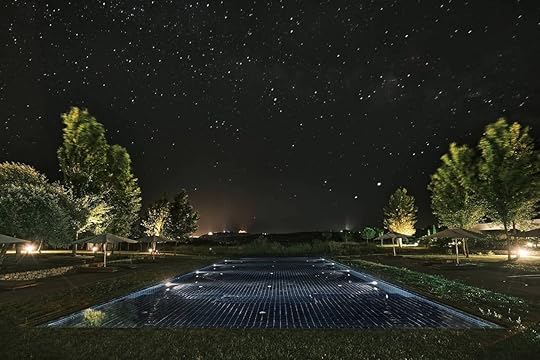
Photo: L’AND Vineyards/Facebook
An hour’s drive away from downtown Lisbon, L’AND Vineyards Resort is an exclusive retreat blending modern architecture with nature. The resort is located in Alentejo, the region bordering Algarve in the south, Spain in the east, and the Atlantic Ocean in the west. Far away from city lights, this is one of Portugal’s best spots for stargazing.
The hotel matches its spirit with the surrounding landscape with the Brazilian Márcio Kogan’s interiors, Promontório’s architecture and Michael Biberstein’s artwork. All suites are around the main property, where you can relax in the Vinotherapie spa, taste local flavors in the restaurant, or participate in a wine tasting. But perhaps the best part of the stay are the nights as the resort’s sky suites have retractable roofs, allowing you to enjoy stargazing from the comfort of your own bed.
Average price for two per night: $211
9. Slow-paced vacation and stargazing in Thailand, Soneva Kiri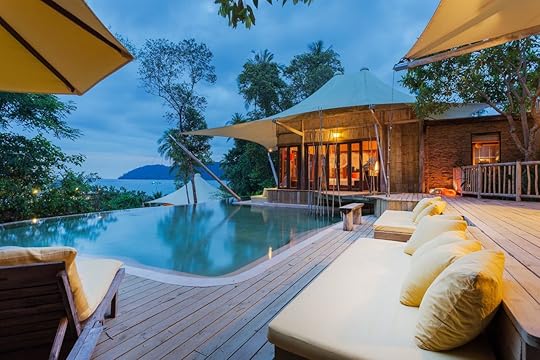
Photo: Soneva Kiri/Facebook
Located on a secluded Thai isle of Koh Kood, Soneva Kiri embraces slow life (sustainable, local, organic, wellness, learning, inspired, fun, experiences). The eco-boutique hotel has 34 villas surrounded by rainforest. For a beach life getaway, stay in one of the Oceanfront Pool Villa Suites with mesmerizing sea views, and for a romantic stay, book a Cliff Pool Villa Suite, and enjoy its big outdoor living space and a pool in complete privacy.
With a spa, private beach, and island activities at your disposal, there is plenty to do in this secluded resort. Hike around the island with an experienced guide, enjoy a floating breakfast in your private pool or have a sumptuous dinner by the beach under millions of stars.
And if you want to learn more about the night sky, visit the nearby state-of-the-art observatory. Here, with the guidance of Soneva Kiri’s astronomers, you will soon be counting the moons of Jupiter, peering at Saturn’s rings, and identifying constellations.
Average price for two per night: $667
10. Stellar rustic-chic in Canada, Trout Point Resort
Photo: Trout Point Lodge/Facebook
Certificated as the World’s first Starlight Hotel in 2014, Trout Point Resort offers guided stargazing in a luxuriously rustic setting in Nova Scotia.
The rustic-chic eco-lodge lies among 100 acres of beeches, birches and maples, and the Tusket and Napier Rivers flow behind the main lodge. The lodge and its grounds border a Unesco Biosphere Reserve, neighboring Kejimkujik National Park, the Mi’kmaw people’s ancestral land.
No wonder that Trout Point Resort is among the best places for stargazing in North America, with dark and clear night skies. The resort has a staff astronomer as well as a stellar collection of astronomical equipment, including Meade 10″ telescope, astronomical binoculars, portable Celestron SkyProdigy 130 mm, and Coronado 60 mm solar telescope.
But as breathtaking as the night sky in Nova Scotia is – with occasional meteor shows and aurora borealis included — Trout Point Resort also has its unique charms as huge logs make up the central building, rooms are decorated with local granite and red sandstone and comfy leather sofas invite you to relax in the main lounge. 
Average price for two per night: $419
More like thisAstronomy6 best dark-sky destinations in the USThe post 10 of the most luxurious stargazing resorts around the world appeared first on Matador Network.
This new council will help your travel become a force for good
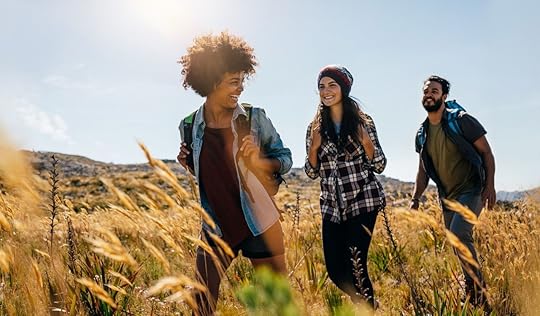
This is the Climate Win, the most positive sustainability news around the world each week.
This week we’re doing something different in the Climate Win column. We’re getting introspective. Underlying Matador’s editorial coverage is the belief that travel fosters global awareness and that travelers build empathy as a result. This plays into advocacy for causes including environmentalism and conservation, social justice, and mental health.
The Transformational Travel Council, a social purpose corporation based in Seattle, Washington, brings this together with the goal of awakening travel’s potential to make positive change in the world. The TTC is an affiliated group of travel industry veterans working to unite both travelers and the travel industry in its quest for a more inclusive, mindful, and eco-friendly travel sector.
“We are really focused on educating and training the trade — travel advisers, hoteliers, life coaches, retreat centers, on these practices, so they can set the conditions for travelers around the world to have those journeys,” says Jake Haupert, co-founder and CEO of the Transformational Travel Council.
Travelers and industry professionals can apply to join as an ally of the council. They can then participate in projects such as the Transformation Design Program, a workshop that guides participants through a series of exercises designed to help them assess how and why they travel, the impact of that travel on self and planet, and how it can be improved upon to create lasting positive impact. Of course, not everyone can afford the $1,950 tuition to join the program. It is primarily intended for industry professionals and businesses looking to further their positive impact on the sector.
For individual travelers, the easiest way to get involved and apply the Transformational Travel Council’s mission of empathy and ecological stewardship is with its Transformative Travel Journal. This journal costs about $30 and prompts users to mindfully prep and execute their travels, and reflect upon their experiences in order to form a plan of action to better take care of themselves, those around them, and the planet upon returning home.
“The three pillars that we operate on are connection and awareness to self, connection and awareness to others, and the third is connection and awareness to systems,” Haupert says. “All of our practices that we advocate for and train on are to help travelers become more aware and better stewards of the planet.”
The council is also working to launch a Diversity, Equity, and Inclusion program called Unpacking Us. This program is about using travel as a means to address racial healing, while shining a light on social inequities. Overall, the TTC hopes to get travelers and the industry at large thinking about why they travel in the first place.
“It’s behavior and awareness that we’re advocating for, because that’s what’s going to stick,” Haupert says. “No one is going to live more sustainably or responsibly because they are told; they are going to make better choices because they have a relationship with the world around them.”
More climate wins this weekThe Biden administration this week opened a new federal office for climate change and its effects, The New York Times reported. The Office of Climate Change and Health Equity will study how a warming planet impacts human health and what the federal government can and should do to plan for and counter these impacts.
The Special Presidential Envoy for Climate John Kerry visited Japan this week to discuss climate chage. Following the meeting the two countries released a joint statement broadly outlining a plan to work together to end government financing of coal and to harness the global momentum of the COP26 Glasgow event in November to ensure the world meets the demans of the 2015 Paris Agreement.
A federal judge tossed out a rule enacted by the Trump administration that permitted the draining and filling of waterways, marshes, and wetlands and that rolled back their protections, among the most significant of the past administration’s environmental rollbacks. The Washington Post reported that the judge found that the rollbacks failed to consider environmental impacts and violated the rights of Indigenous nations. 
The post This new council will help your travel become a force for good appeared first on Matador Network.
September 2, 2021
These photos taken from space show what 2021 looked like from above

commercial space travel is ever so slowly making its way to civilians. Still, in 2021 the average person can only realize views from space through photos sent back from above. Astronauts at the International Space Station (ISS) orbit the Earth every 90 minutes from 250 miles away, so they are no stranger to picturesque views. While the seven people on the space station enjoy some of the most beautiful sights around the planet, they also have views first-hand of the effects of climate change around the country. These photos from the ISS show a changing Earth from the perspective of astronauts in 2021.
Because the ISS orbits so quickly, the astronauts are treated to 16 sunrises and sunsets daily. The different landscapes, from deserts, tropical islands, mountains and more. On April 2, 2021, they got a striking view of a volcano in Russia.
The astronauts also enjoy amazing views of city lights around the globe, like this shot featuring Tokyo, Japan.
However, there have been more concerning sites to see due to the threat of climate change, everything from natural disasters to melting ice caps, deforestation, and vanishing water sources. Astronaut Megan McArthur tweeted out some pictures she took over California, devasted about this season’s outbreak of wildfires.
California on Sunday from @Space_Station. Tough to see these views of my home state. My thoughts are with all those affected. pic.twitter.com/vbxtu3JZP5
— Megan McArthur (@Astro_Megan) September 1, 2021
She also posted some comparative photos to show the manifestation of the water shortage along the Colorado River.
A water shortage declared for Lake Mead, largest reservoir in the US, for the 1st time. Compare the image I took recently aboard @Space_Station with others taken by SkyLab (1973) and Space Shuttle (2006) astronauts. Decrease in water level over decades visible even from space. pic.twitter.com/mZ4UyHpxZe
— Megan McArthur (@Astro_Megan) August 26, 2021
As Hurricane Ida continues to grip the South, the astronauts got some shots of it while it was still a category 2 storm.
But even though there may be some sights that aren’t pleasant to see, the view of the fragile atmosphere that protects the planet speaks to the importance of taking care of Mother Earth. 
The post These photos taken from space show what 2021 looked like from above appeared first on Matador Network.
The best road trip itinerary to see the most popular roadside attractions in the US
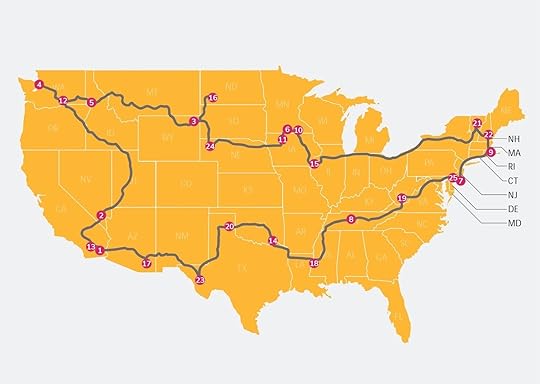
Instead of a road-trip to visit all the US national parks, or one that will take you to the best leaf-peeping spots in the country, why not get in the car to try and see some of the US’s coolest roadside attractions?
There are so many fun and quirky roadside attractions in the US — like Seven Magic Mountains in Nevada, or Carhenge in Nebraska — that building an entire road trip around them is a breeze.
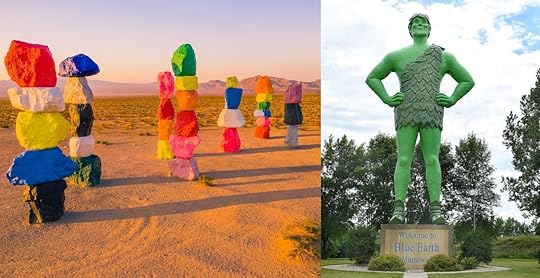
Photo: SkyBlodgett/Shutterstock and Steve Cukrov/Shutterstock
But to save you the planning of such a road trip, credit broker money.co.uk used data from TripAdvisor and Instagram to select the top 25 roadside attractions in the US and mapped out an efficient itinerary to see them all in one go.
The ultimate roadside attraction road trip is a 9,918-mile loop and will take roughly 14 days to complete, with a total of 154 hours spent on the road.

Photo: money.co.uk
Here are the top 25 roadside attractions in the US (in order of the popularity):
Salvation Mountain, California Seven Magic Mountains, Nevada Devils Tower, Wyoming The Fremont Troll, Washington Worlds Largest Beagle, Idaho Jolly Green Giant, Minnesota Lucy the Elephant, New Jersey Parthenon, Tennessee Lizzie Borden Murderabilia, Massachusetts SPAM Museum, Minnesota Grotto of the Redemption, Iowa Historic Nucelur B Reactor, Washington Beasts of Borrego Springs, California Showman’s Rest, Oklahoma Snake Alley, Iowa Enchanted Highway, North Dakota Tombstone, Arizona The Windsor Ruins, Mississippi Exhibition Coal Mine, West Virginia Devils Rope Museum, Texas Granite Sculptures of Hope Cemetery, Vermont USS Albacore, New Hampshire Prada Marfa, Texas Carhenge, Nebraska Museum of American Glass, New JerseyTo find out more about this roadside attractions road trip itinerary, visit money.co.uk.
The post The best road trip itinerary to see the most popular roadside attractions in the US appeared first on Matador Network.
11 unforgettable moments in Alaska

If any year is the year to break free of the mundane, it’s this one — and no place in the US can jolt you out of the doldrums like Alaska. With five distinct regions uniting colossal mountains, scarlet-hued tundra, glacial fjords and bays, gold-strewn rivers, and diverse Indigenous cultures, the sights and experiences you’ll encounter in the 49th state are truly unforgettable.
So trade that backyard staycation for something truly extraordinary — here are just a few moments you’ll experience in Alaska this year that will stay with you for a lifetime.
1. Dog sledding through landscapes like this
Photo: State of Alaska/Matt Hage
For thousands of years, Alaskans relied on dogs and dog sleds to transport supplies, carving sledding routes throughout the state. One of these routes, connecting Seward to the Western Arctic, became etched in legend in 1925, when a diphtheria outbreak ravaged the icebound city of Nome. Dangerous weather grounded planes, but dog sled teams made the arduous, nearly 1,000-mile trek to deliver lifesaving medicine. Sound familiar? This event inspired the Iditarod, the most famous sled dog race in the world.
Dog sledding is widely celebrated to this day: From the annual Iditarod to family-friendly, hands-on dog mushing rides around the state — in any season, perhaps beneath the northern lights or even on a glacier — you and the kids can experience this integral part of Alaska history and culture.
2. Finding treasure in the water
Photo: State of Alaska/Matt Hage
Yep, there’s gold in them hills! Russian settlers first found gold in the Kenai River in 1848; by 1870, regular gold mining took place southeast of Juneau, though the famous Klondike Gold Rush wouldn’t happen until 1896. But Alaska’s gilded treasures aren’t just a 19th-century legacy. Today, over 10% of all gold mined in the US comes from the 49th state.
And everyone’s welcome to get in on the action! There are any number of family-friendly gold-panning adventures to choose from, where you’ll get your waders wet in rushing streams and try your hand where 100,000 gold rushers panned for richer destinies. And of course, even if you’re just playing in the water, keep an eye out for something golden glittering in the ripples.
3. Walking across a glacier
Photo: State of Alaska/Mark Kelley
Alaska’s many glaciers can be appreciated near or far, but getting these icy behemoths within arm’s reach makes for a wild, unforgettable adventure. And they’re surprisingly accessible: Everyone from kids to grandparents can walk up to, across, or even climb (with a guide, of course) a number of Alaska’s glaciers, like Matanuska, Exit, and Laughton, just to name a few.
For something even more accessible, consider a flightseeing tour. From an agile helicopter or flightseeing plane, you’ll get to witness the immense size and flowing pathway of the river of ice — a vision not soon forgotten. And for relaxation and ease, you can’t beat day cruises, like to Columbia Glacier in Prince William Sound. With calm, protected waters and constant opportunities to spot wildlife on and off the ice, the experience can feel both peaceful yet imposing, monumental yet serene.
4. Bearing witness to “The Great One”
Photo: State of Alaska/Matt Hage
Compared to Denali, 14ers are child’s play. “The Great One” — the Koyukon-Athabascan meaning of the name — reaches 20,310 feet above sea level, rising over a mile taller, in terms of base-to-summit elevation, than Mount Everest does. This lends the continent’s tallest peak an extra sense of drama: When the clouds part and you catch a glimpse of Denali looming over its much shorter neighbors, expect to literally lose your breath for a moment.
While — on a clear day — you may be able to see Denali from Anchorage, your best bet for scoring this wondrous view is to visit Denali National Park and Preserve. Beyond the peak, there’s so much to take in: spruce forests, subalpine tundra, marshy taiga, braided rivers, shelves of permafrost, massive glaciers, and steep cliffs, all combining to create diverse habitat for grizzly bears, wolves, moose, caribou, and Dall sheep. Spend your unforgettable days wildlife spotting, river rafting, hiking, camping, or flight-seeing. Comfortable backcountry lodges make for easy, unforgettable nights, too.
5. Riding a heritage gold mining train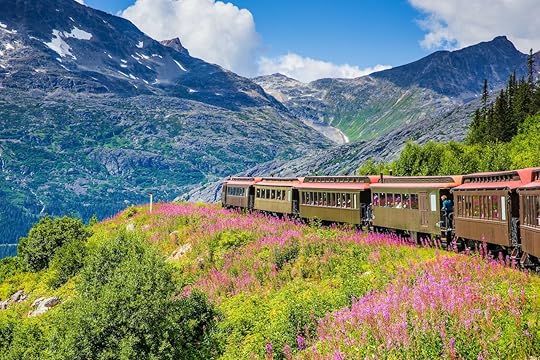
Photo: emperorcosar/Shutterstock
When gold was discovered in Alaska and the Yukon, miners had to haul equipment on foot and by horse up the “Golden Stairs” to the summit of Chilkoot Pass. To remedy this significant obstacle, the White Pass & Yukon Route was constructed from 1898 to 1900, traversing the slightly less steep White Pass. Climbing from sea level in Skagway up to the 2,865-foot pass and all the way to Carcross, in the Yukon, it encompassed numerous tunnels, bridges, and switchback curves, a serious feat of engineering. So was born the “Scenic Railway of the World.”
Today, the WP&YR operates as a heritage railroad — which is to say, travelers need only bring themselves and their passports to reach Carcross via the route’s comfortable vintage train cars. Shorter excursions travel to White Pass summit and back (no passport required), but a trip of any duration gets you incredible views of rugged canyons, waterfalls, rushing rivers, and sky-high peaks, all looking pretty much just as they did 120 years ago.
6. Watching the night sky glow in technicolor ribbons
Photo: Beth Ruggiero-York/Shutterstock
Alaska’s northern lights do actually occur year-round — but they’re certainly more difficult to see under summer’s midnight sun. Your best bet for viewing the aurora is between August and April, when it’s darker longer and the air is crisp, making it easier to spot the breathtaking pinks, greens, yellows, blues, and purples as they dance across the night sky.
Fairbanks is touted as one of the best places in the state (if not the world) to view the northern lights, but don’t write off spotting this natural wonder wherever you are — particularly in the Interior and Arctic regions. Hop on a guided tour to increase your odds, as local guides know the best spots, weather trends, and factors to consider for the most colorful outings. (And if your hotel offers it, ask for a northern-lights wakeup call!)
7. Immersing yourself in Alaska Native culture
Photo: dshummy/Shutterstock
Alaska’s Indigenous history runs from millennia in the past all the way up through today. The state is home to 229 Federally Recognized Tribes, and each region holds a different confluence of Alaska Native cultures. As you explore, you’ll discover how these traditions and histories blend into the state’s diverse way of life. Start with a little education at places like the Alaska Native Heritage Center (Anchorage) and the Morris Thompson Cultural Center (Fairbanks). Then, here are just a few spots — of hundreds — you could add to your itinerary:
Just minutes from downtown Sitka in Alaska’s Southeast, Sitka National Historical Park is set on the site of a battle between the Tlingit and Russian soldiers in 1804 and pays tribute to the region’s Tlingit heritage. Walk the Totem Trail to see 18 stunning examples of this Alaska Native artform.Kotzebue, west of Kobuk Valley National Park in the Arctic, is one of the state’s oldest Iñupiat villages. Check out the Northwest Arctic Heritage Center for a deep dive into this culture.There are six Alaska Native villages on Kodiak Island, and plenty of tours and lodging options are Native-owned or Native-run. Don’t miss the Alutiiq Museum and Archaeological Repository, in the city of Kodiak, for a thorough cultural history of the state’s largest island.8. Crossing the Arctic Circle
Photo: Senthil Raman/Shutterstock
Just under 200 driving miles north of Fairbanks, there’s an invisible — but powerful — line: the Arctic Circle, 66°33′ north of the equator. Few travelers will ever experience the land of the true midnight sun, but cross that line and you’ll be one of them.
And it’s simple to do. Rent a car or hop on a tour of the Dalton Highway — beginning near Fairbanks and ending all the way up at Deadhorse — and you’ll ceremoniously cross over, celebrating with views of the endless boreal forests and occasionally stopping for caribou. Of course, many trips into the Arctic are made by plane, as there aren’t too many roads up here. And crossing the Circle is just as cool if you do it in the air!
9. Viewing humpback whales in their natural habitat
Photo: State of Alaska/Reinhard Pantke
As many as 10,000 humpback whales feed in the waters surrounding Alaska, building up fat stores before migrating toward Hawaii to breed and calve. The state’s Southeast region is a tail-tossing hotspot, but they’ll even go as far north as Utqiaġvik, on the Arctic Ocean, for the right krill buffet.
The best time to watch for these massive mammals is June to August; from April to May, you can try to catch their migration, if you know where to go. Whale-watching tours abound to help you spot a humpback or three, though you could always grab a kayak — or simply go for a stroll along the Homer Spit in Kachemak Bay — and cross your fingers for a whale breach.
10. Exploring the country’s biggest national park
Photo: State of Alaska/Matt Hage
Home to some of the grandest volcanoes, mountains, and glaciers on the continent, the 13.2-million-acre Wrangell-St. Elias National Park and Preserve lets visitors experience an expansive wilderness from sea level up to 18,008 feet. Once you discover that land can be this majestic, this massive, this diverse — you never, ever forget.
Yet, despite the park’s overwhelmingly backcountry feel, you’ll find family-friendly campsites, cabins, hotels, RV sites for the glampers among us, and even luxurious lodges that can make your off-grid expedition an ultra-comfortable one. And you can easily drive from Anchorage to the gateway community of McCarthy and the nearby restored historic mining ghost town of Kennicott. When the sun rises, go on guided tours, hike, float, backpack, fish, or simply be. However you do it, take care of this fragile environment, and make sure to leave no trace.
11. Catching salmon — kind of like the brown bears
Photo: Rostislav Stach/Shutterstock
While you can’t sit with Katmai’s famous brown bears in the Brooks River, waiting for salmon to fly into your mouth, there’s always the next best thing: fishing for “reds” in Alaska’s Southwest. Bristol Bay has the largest red salmon run in the world, with plenty of king salmon to boot — get set up with a trusty guide in Dillingham to hit the waters.
Meanwhile, trips out of Kenai, Soldotna, and Cooper Landing will get you to the Kenai River and some of the world’s best sockeye salmon fishing from mid-June to early August. Outfitters abound to help make it happen, and maybe you’ll spot a few brown bears doing a little fishing of their own! You could also challenge your sea legs on a halibut charter out of Seward or Homer. Just remember: In the moments between bites, keep your eye on the horizon, concentrating on that view. It’ll be unforgettable. 
The post 11 unforgettable moments you’ll experience in Alaska appeared first on Matador Network.
These gorgeous Summit County Airbnbs are the perfect home for your group ski trip

Summit County and the tri-town area of Frisco, Dillon, and Silverthorne are the heart of Colorado’s ski country. From here you can easily access Breckenridge, Keystone, Arapahoe Basin, Loveland, and Copper Mountain. These Summit County Airbnbs put your family or group close to the ski lifts as well as dining, shopping, and nightlife, with the added bonus of being near the county’s free bus system so you can get around even without a car.
We hope you love the Summit County Airbnbs we recommend! Just so you know, Matador may collect a small commission from the links on this page if you decide to book a stay. Listed prices are accurate as of the time of publication. See our full Advertiser Disclosure here.
Frisco Main Street condo with hot tub access perfect for skiing and nightlife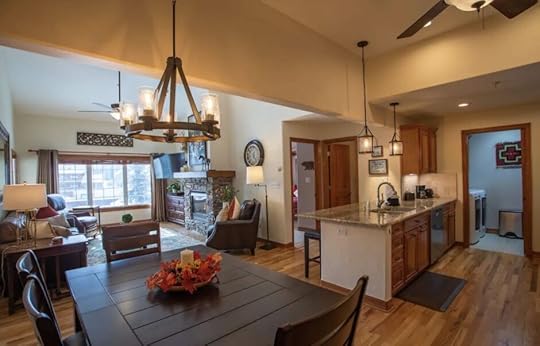
Photo: Airbnb
Visitors to Summit County often fall for one major misconception — that the apres-action all takes place in Breckenridge. Breck’s scene is lively and more reminiscent of the post-ski party life of European ski resorts than elsewhere in the county. But Frisco has a scene of its own along Main Street. This tailored condo puts you within walking distance of the bars, restaurants, and live music in Frisco and right near the Summit Stage bus stop to head to whatever ski area you want to visit the following morning. It’s a top-floor unit and comes with parking underneath the building, a real commodity among Summit County Airbnbs for those visiting with a vehicle. The building has an outdoor hot tub, and if you’ve never soaked during a snowstorm, just know that the experience is almost as cool as the skiing.
Six guests, two bedrooms
Price: From $299 per night
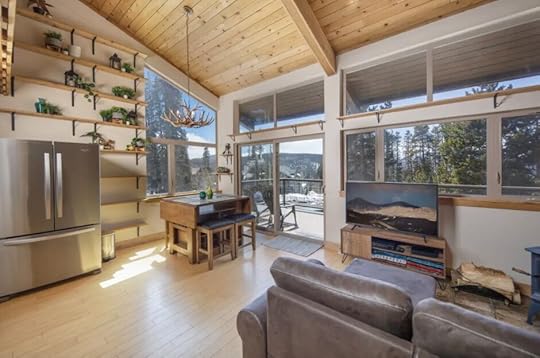
Photo: Airbnb
Baldy Mountain towers over Breckenridge from the east, a pointed counter to the ski resort on the west side of the picturesque town. This home comes with views of the peak and its neighbors and on the inside, a hefty dose of luxury. The townhome offers an expansive living space with a chef’s kitchen, plenty room to lounge, and views in all directions. Bedrooms are warm and cozy, calling to the wild roots of mountain life in the decor but not sacrificing on thread count or functional furniture and sleeping arrangements. A free bus picks up outside and heads to the ski hill. And, if you’re into backcountry skiing or snowboarding, you can access the skin track trails up into the Bald Mountain zone without even having to drive.
Six guests, two bedrooms
Price: From $278 per night

Photo: Airbnb
If you’ve seen the movies Out Cold (inarguably the perennial masterpiece of the modern film industry), Aspen Extreme, or any other quirky flick based in a ski town, and have thought to yourself, “I could live like that,” then this house is for you. Log homes are the dreams of the mountain-savvy, and this one is cozy and comes with a hot tub and room for your entire crew. Take a post-ski soak, lounge on the classic alpine furniture, and cook dinner over an open fire, all while envisioning your inevitable future as a ski bum. Few lifestyles offer the dignity and cool points of such a life, and this home is your first step towards it.
Eight guests, four bedrooms
From $600 per night
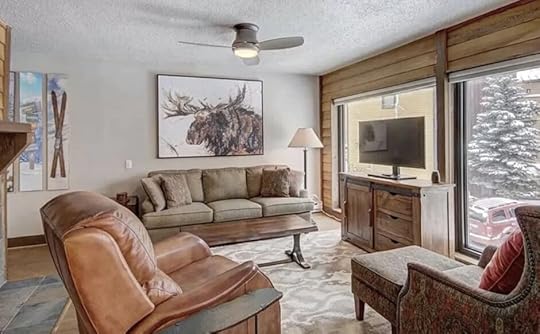
Photo: Airbnb
Situated in the base village at Copper Mountain, this two-bedroom unit puts you a skip from the lifts. Dining, shopping, and nightlife are just downstairs, including the legendary JJ’s Rocky Mountain Tavern and Mulligan’s Irish Pub. The condo is well-equipped with a full kitchn, nice balcony, and a gas fireplace to cozy up next to. It also positions you well to experience the unique setting of Copper, which is separate from the main Summit County micro-polis and has its own ski-town vibe and flare. Tip from a long-time Copper Mountain rider — head to the new lift up Tucker Mountain, which was formally only accessed via snowcat or a long skin up from Copper’s backside. The powder turns are so much better on the far side.
Seven guests, two bedrooms
Price: From $500 per night
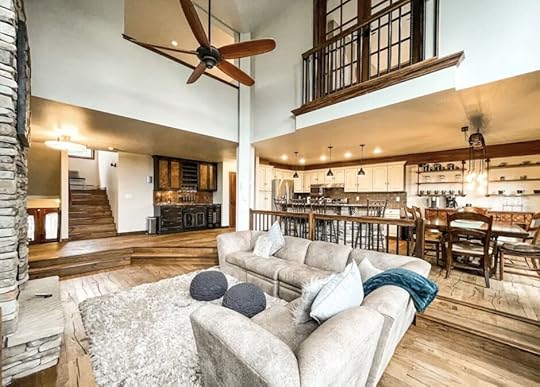
Photo: Airbnb
Pop the champagne because this home is the stuff of ski vacation legend. Minutes from the slopes of Keystone and Arapahoe Basin, and with bus access to Breckenridge and Copper Mountain, you’ll be in the perfect place to experience all of Summit County. Look out from the grand deck onto the surrounding hills and the frozen waters of Lake Dillon. Prepare gourmet meals in the fully-stocked modern kitchen. Watch the sunset over the town of Dillon, and wake up with easy access to the morning’s fresh powder. If traveling with a group or extended family, Summit County Airbnbs don’t get any better than this.
Eight guests, three bedrooms
Price: From $799 per night
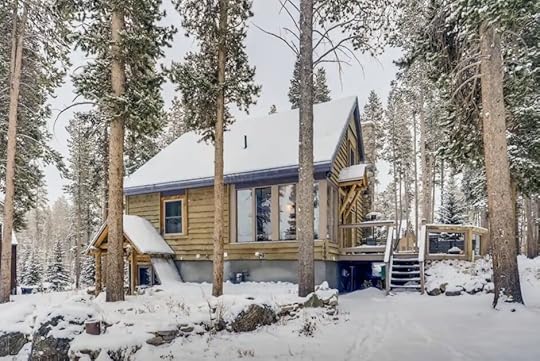
Photo: Airbnb
When someone asks where you’re staying in Breck, no cooler response exists than “on the mountain.” This high-end cabin gives you the ability to say that, and to then elaborate by stating you’re in a log cabin home just off the base of Peak 7 with a private hot tub on the deck and room for the entire extended family. And that after your last run today you scrambled down the road to Broken Compass Brewing for an apres-ski pint and thought about heading downtown after, but decided instead to sip a nightcap on the cabin’s deck while listening to the mountain winds shake the fresh powder from the pines. And the host loves and welcomes dogs. The ultimate ski vacation win.
Twelve guests, four bedrooms
Price: From $1,594 per night
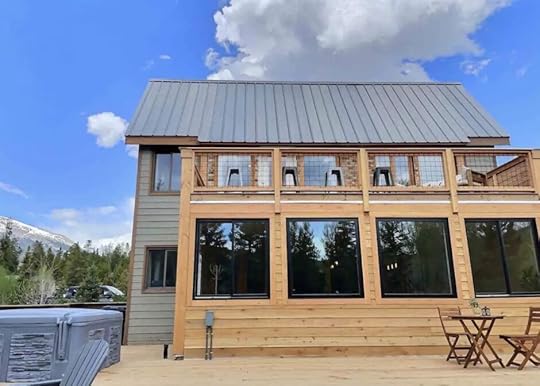
Photo: Airbnb
Host your family, reunion, or large get-together in the utmost style at this luxurious chalet with a rooftop deck in Frisco. Your crew will enjoy the hot tub and sunroom, lounging on the deck after a long day on the slopes, and easy access to dining, shopping, nightlife, and all Summit County ski resorts (without even needing to have a car). There is plenty of space to relax and watch movies, play games, and take apres-ski naps as well. This home is ideal for large gatherings of people that you haven’t seen for a while, and want to enjoy convenience and comfort without having to stress about it. 
Eight guests, three bedrooms
Price: From $1,564 per night
The post These gorgeous Summit County Airbnbs are the perfect home for your group ski trip appeared first on Matador Network.
The most affordable vacation destinations in the US

The COVID-19 pandemic is far from over, and with the Delta variant raging and the ever-changing travel restrictions, many want to keep their vacation destinations domestic rather than international.
To help you plan your next vacay, travel blog ParkSleepFly rounded up the most affordable urban vacation destinations in the US. The ranking was based on the average cost of a hotel stay for a weekend, food and drink, and transportation (taxi and public transport), in 51 US cities.
Oklahoma City, OK, came in as the most affordable vacation destination. It scored 8.58 out of 10 for affordability with beer only costing $3; $11.50 for a meal at a restaurant; and only $106 for a hotel night. Indianapolis came in second with a vacation affordability score of 8 out of 10.
The most affordable vacation destinations in the US:
Oklahoma City, OK — 8.58/10Indianapolis, IN — 8/10Tucson, AZ — 7.96/10Memphis, TN — 7.87/10San Antonio, TX — 7.77/10New York City tops the list of the least affordable urban vacation destination in the US. The average cost of a weekend hotel stay is $309 per night, $20 for a meal, and $7.81 for a beer. New York City’s vacation affordability score is 2.56 out of 10. San Francisco is not far behind with a score of 3.07 out of 10.
The least affordable destinations in the US:
New York City, NY– 2.56/10San Francisco, CA — 3.07/10Boston, MA — 3.16/10Brooklyn, NY — 3.7/10Philadelphia, PA — 3.94/10For the full list of the 51 most affordable and most expensive urban vacation destinations in the US, and to learn more about the methodology behind the ranking, check out ParkSleepFly’s website. 
The post The most affordable vacation destinations in the US appeared first on Matador Network.
Watch: YouTuber Ryan Trahan spends the night in the world’s loneliest house
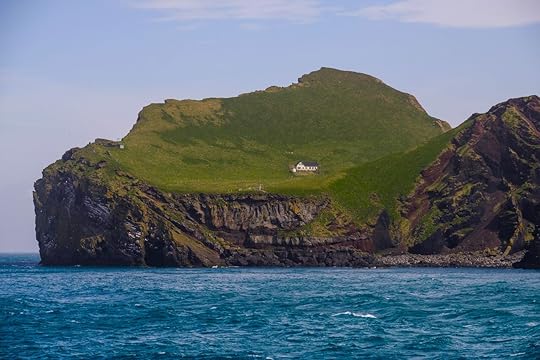
If you find remote, old houses more creepy than charming, you’re not gonna want to go anywhere near this house in Iceland, dubbed “the world’s loneliest house”.
Only accessible via a harrowing boat journey, the house is located off the southern coast of Iceland on the remote island of Elliðaey. YouTuber Ryan Trahan made the trip and filmed his experience so you know exactly what you’re getting into if you decide to follow in his footsteps.
Trahan first takes a taxi to a ferry on the mainland, which drops him off on an island in the Vestmannaeyjar archipelago, and from there, he takes yet another boat — with the help of two locals named Bjarni and Ragnar — to Elliðaey.
The world’s loneliest house has been the source of major unfounded speculation over the years. One theory posits that the house was gifted to Icelandic pop sensation Bjork by the Icelandic government. Another says that it was built by an eccentric billionaire in the event of a zombie apocalypse. Many publications claim the house is abandoned, but considering that in his video Trahan shows a full pantry, a modern working kitchen, and bathroom, as well as electronic equipment and a fire extinguisher, that seems very unlikely.
The reality is that a handful of families lived on Elliðaey in the mid-late 18th century, but moved to the mainland in the 1930s. Today, the island is home to sheep, puffins, and seals, as well as some bird scientists who use the world’s loneliest house to conduct research. Although some rumors say it’s also a lodge used by puffin hunters. 
The post Watch: YouTuber Ryan Trahan spends the night in the world’s loneliest house appeared first on Matador Network.
Matador Network's Blog
- Matador Network's profile
- 6 followers


